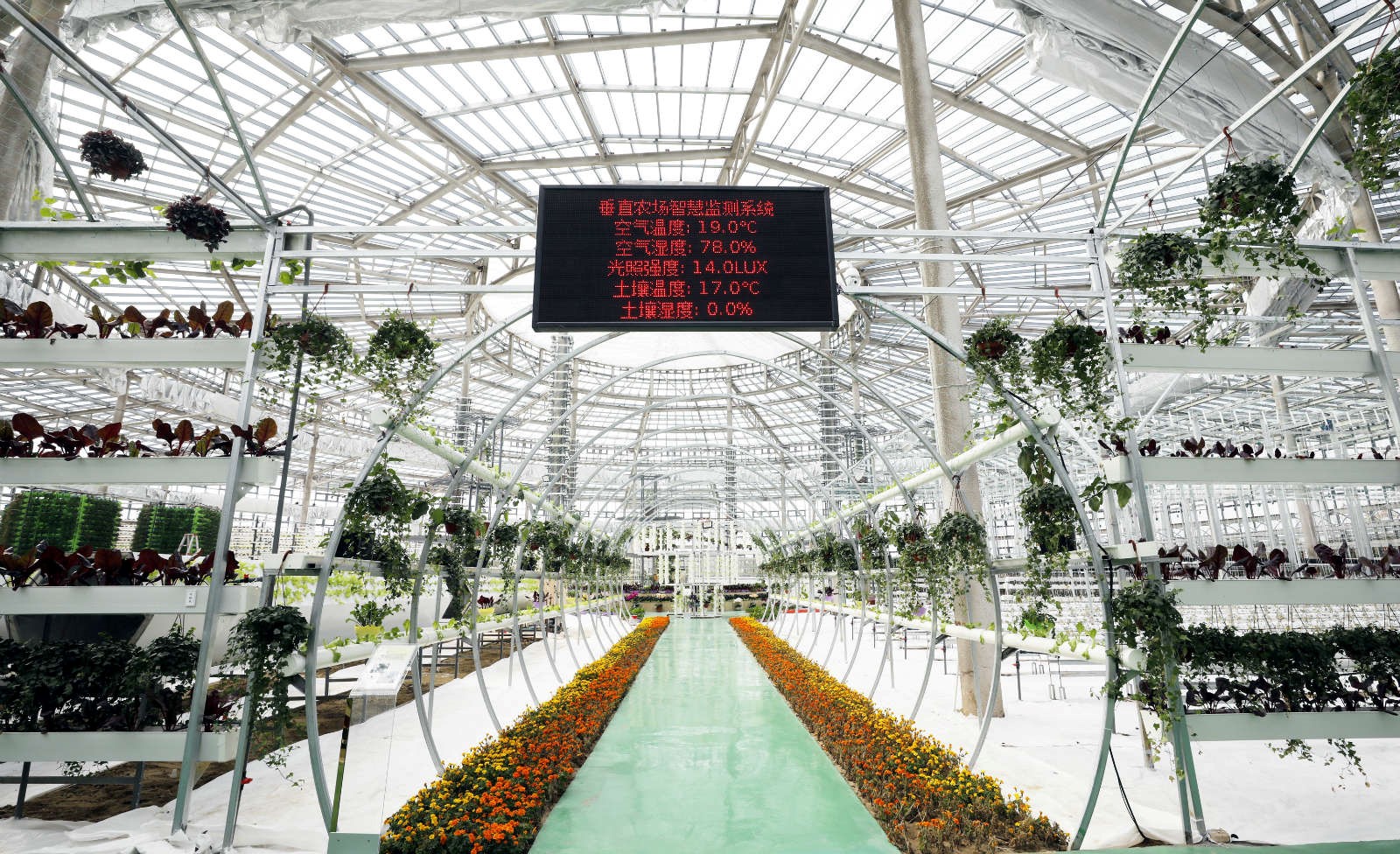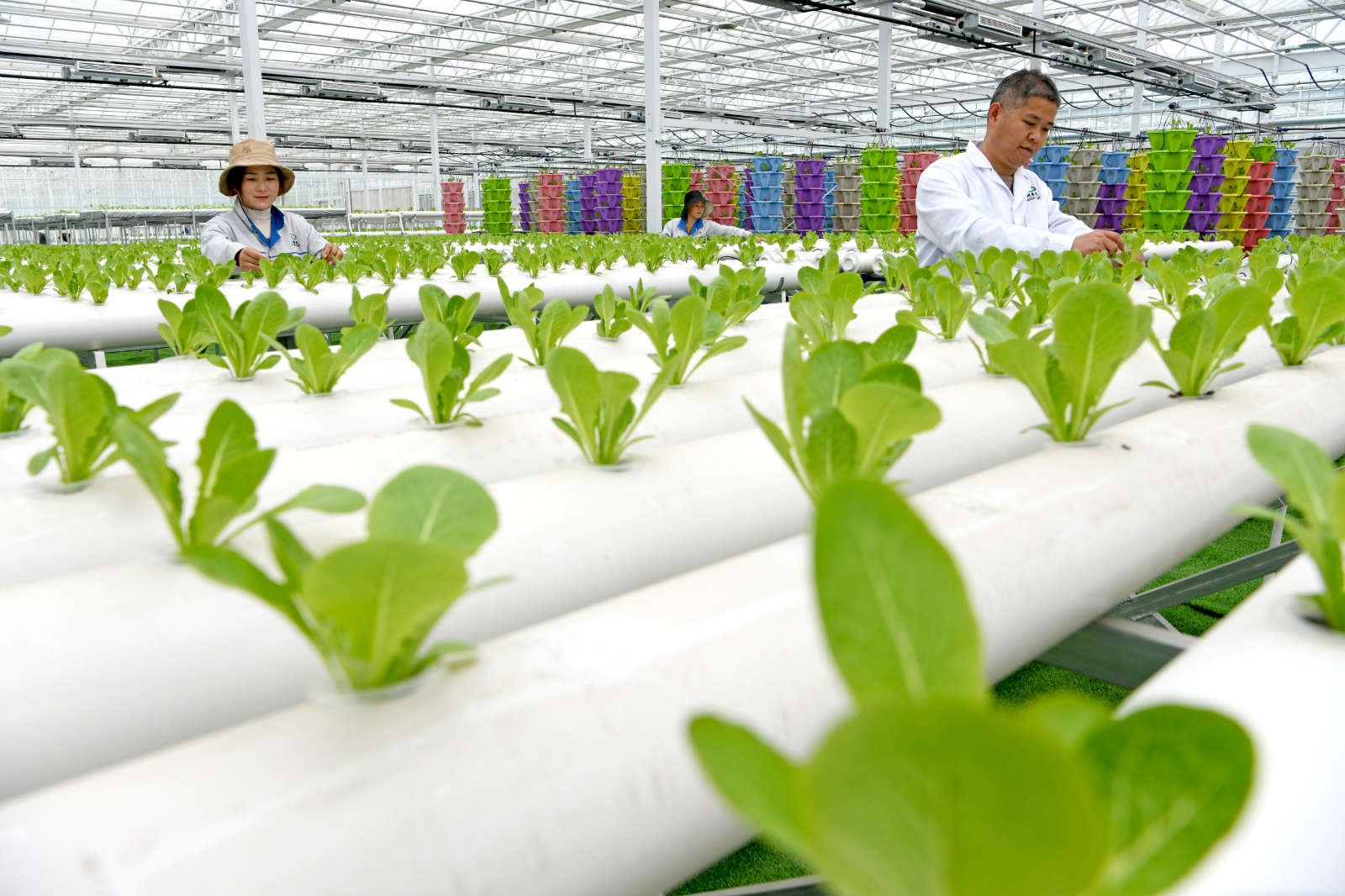

Wei Xianhui, a flower farmer in Huadu District of Guangzhou, south China’s Guangdong Province, picked up the pace toward the local bureau of agriculture and rural affairs.
“I heard the government is helping us to sell flowers online and offer us training courses, so I came to check out,” he said.
In recent days, an online promotional activity held in Guangzhou’s Baiyun District and Nanhai District of Foshan, a city on the west of Guangzhou, significantly boosted local flower sales, which aroused the interest of Wei.
During the past year, digitalization and informatization offered strong support for China in controlling COVID-19, resuming work and production, and guaranteeing livelihood.

Livestream host Zhang Wenjuan (right) holds a livestream show in a tea plantation in Taipingxi Township, Yiling District, Yichang, central China’s Hubei Province, Feb. 19, 2021. (Photo by Zhang Guorong/People's Daily Online)
For instance, pineapples produced in Guangdong’s Xuwen have been sold to a number of domestic and foreign destinations thanks to online marketing. Mayors and county heads across China are also active in livestream shows held on e-commerce platforms to promote local farm produce and cultural products.
In a manner of speaking, the online promotion of flowers in Huadu District was a great attempt to help farmers with digital technologies.
Digital dividends are valuable resources that must be activated in order to achieve rural vitalization.
In Hongguang village of Guangdong’s Jiangyang, temperature, humidity and soil quality sensors have been installed in rice fields, vegetable fields and orchards. Once abnormal data are spotted or insect pests discovered by cameras, irrigation and fertilizing equipment will be activated, and drones will be sent to designated locations to spray pesticides.

Photo taken on Nov. 23, 2020 shows an intelligent monitoring system installed in a modern agricultural park in east China's Jiangsu Province to adjust temperature and sunlight intensity. (Photo by Hua Xuegen/People's Daily Online)
The rice, vegetables and fruits harvested will be directly put onto shelves on e-commerce platforms. Before placing orders, customers can not only check the information of the products on livestream shows, but also watch video clips of the products’ growth. Each of the products comes with a QR code, from which customers can check the varieties, sources and inspection reports of these products.
Digital agriculture and rural informatization are not simply sending affordable consumer products to the countryside, or selling farm produce with influencer marketing. They are more about transforming agricultural production and rural lifestyles with digital and information technologies.

Employees of an agricultural tech firm in an agricultural park in Huainan, east China’s Anhui Province manage hydroponic vegetables, Feb. 7, 2021. (Photo by Chen Bin/People's Daily Online)
Apart from high-standard farmland, modern water conservancy facilities, and trained professional farmers, digital infrastructure and interconnectivity applications are also indispensable production factors. Only by turning digital dividends into development dividends, can agriculture be developed, countryside be benefited, and farmers be enriched.
As long as China connects the ever-changing technologies with rural development and people’s livelihood, the country will be able to write a better chapter of rural revitalization in the new era.

 Award-winning photos show poverty reduction achievements in NE China's Jilin province
Award-winning photos show poverty reduction achievements in NE China's Jilin province People dance to greet advent of New Year in Ameiqituo Town, Guizhou
People dance to greet advent of New Year in Ameiqituo Town, Guizhou Fire brigade in Shanghai holds group wedding
Fire brigade in Shanghai holds group wedding Tourists enjoy ice sculptures in Datan Town, north China
Tourists enjoy ice sculptures in Datan Town, north China Sunset scenery of Dayan Pagoda in Xi'an
Sunset scenery of Dayan Pagoda in Xi'an Tourists have fun at scenic spot in Nanlong Town, NW China
Tourists have fun at scenic spot in Nanlong Town, NW China Harbin attracts tourists by making best use of ice in winter
Harbin attracts tourists by making best use of ice in winter In pics: FIS Alpine Ski Women's World Cup Slalom
In pics: FIS Alpine Ski Women's World Cup Slalom Black-necked cranes rest at reservoir in Lhunzhub County, Lhasa
Black-necked cranes rest at reservoir in Lhunzhub County, Lhasa China's FAST telescope will be available to foreign scientists in April
China's FAST telescope will be available to foreign scientists in April